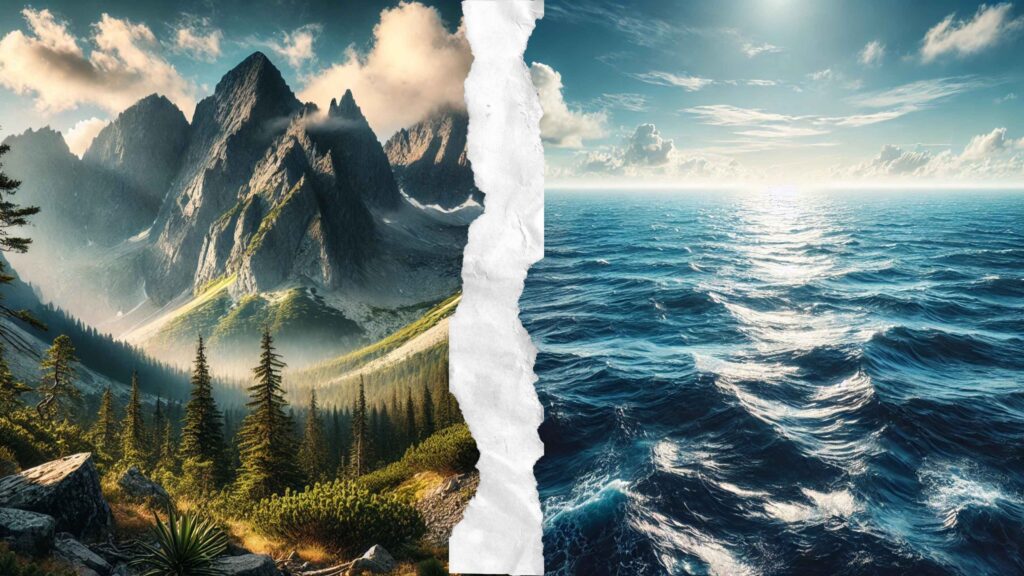Earth is our planet, a planet of life and natural wonders. But did you ever think about how Earth came to be and why it’s so perfectly suitable for living organisms? In this blog, we’re going to look at Earth’s origin, how its oceans and atmosphere came to be, and the natural features that make Earth life-friendly.
How Was the Earth Created?
A very long time ago, around 4.6 billion years ago, there was no Earth, Sun, or planets. It was all gas and dust suspended in space. Gradually, this dust and gas all clumped together due to gravity and created the Sun. The remaining pieces became attached to create Earth and other planets.
At first, Earth was extremely hot and volcanoes covered it. It cooled over time, and a hard crust developed. The volcanoes continued to erupt, spewing gases and steam. This assisted in creating the atmosphere and water on Earth.
How were the oceans created?

As the planet cooled, the steam from volcanoes condensed to become clouds. These clouds released long periods of heavy rain that continued for thousands of years! The rain watered up in the low-lying places and created the earliest oceans. Now, roughly 71% of the planet is covered by water. Oceans are significant because they regulate the temperature and give life to numerous animals.
You may also like: “Cultivating Leadership in Young Minds for a Brighter Future.“
How Was the Atmosphere Formed?
The air surrounding the Earth is referred to as the atmosphere. It was formed due to gases that came out from volcanoes and the ocean. The initial atmosphere consisted of carbon dioxide, nitrogen, and water vapor, but oxygen was practically non-existent.
As time went on, microscopic plants and algae in the sea began producing oxygen from photosynthesis. Gradually, the atmosphere shifted, and today it consists of:
▪️ 78% Nitrogen – Supports the growth of plants
▪️ 21% Oxygen – Essential for breathing
▪️ 0.04% Carbon Dioxide – Plants utilize it and warms Earth
▪️ Other gases – Trace amounts of argon, helium, and methane
The atmosphere guards us against the Sun’s damaging rays and warms Earth during the night.
Why is the Earth Ideal for Life?

Earth is the single planet we know with life on it. The Earth is ideal for living things because:
💠 Adequate Distance from the Sun – Not too warm and not too cold.
💠 Liquid Water – Oceans, rivers, and lakes supply all living organisms with water.
💠 Fresh Air – Atmosphere provides oxygen for us to breathe.
💠 Magnetic Field – Shields us against destructive space radiation.
If any of these were absent, life on Earth would be impossible.
How Many Seas and Countries Are There?
Our planet is separated into 7 continents and approximately 200 nations. The five largest oceans are:
🌊 Pacific Ocean – The deepest and largest ocean
🌊 Atlantic Ocean – Between North and South America, and Europe and Africa
🌊 Indian Ocean – Between Africa, Asia, and Australia
🌊 Southern Ocean – Encircles Antarctica
🌊 Arctic Ocean – The smallest and icy ocean
Apart from oceans, there are over 50 seas globally. Seas are smaller compared to oceans but very vital to life.
The Natural Wonders of Our Planet
You may also like: “Discovering Earth: Our Home in the Universe | Anee’s School“
Our planet is inhabited by incredible natural wonders. The most well-known ones are:
🏔️ Mount Everest – The highest peak on our planet, in Asia.
🪨 The Grand Canyon – The enormous canyon in the USA, created by the Colorado River.
🌊 The Great Barrier Reef – The largest coral reef system in the world, in Australia.
🌳 The Amazon Rainforest – The largest and most critical rainforest, inhabited by millions of animals.
💦 Niagara Falls – Strong waterfalls on the USA-Canada border.
These natural wonders demonstrate how beautiful and unique our world is.
What Can We Do to Save Earth?

Although Earth is ideal for life, we need to take care of it. Pollution, deforestation, and climate change are damaging our planet. The following are some easy tips to save Earth:
💧 Save Water – Do not waste water while brushing teeth or washing dishes.
⚠️ Decrease the Use of Plastic – Use cloth bags rather than plastic bags.
🌳 Plant More Trees – Trees purify the air and produce oxygen.
⚡ Save Energy – Switch off lights and fans when not required.
♻️ Recycle – Recycling reduces waste.
By performing these little actions, we can maintain Earth as lovely and secure for generations to come.
Conclusion
Earth is unique in that it contains all life requires – water, air, and a proper temperature. Learning about how Earth was created and why it is ideal makes us love our home even more.
At Anee’s School, we feel that learning about our world makes us have greater respect for nature. Let’s take care of the Earth so that coming generations can also see its beauty!
Read more important blogs from Anee’s School:








